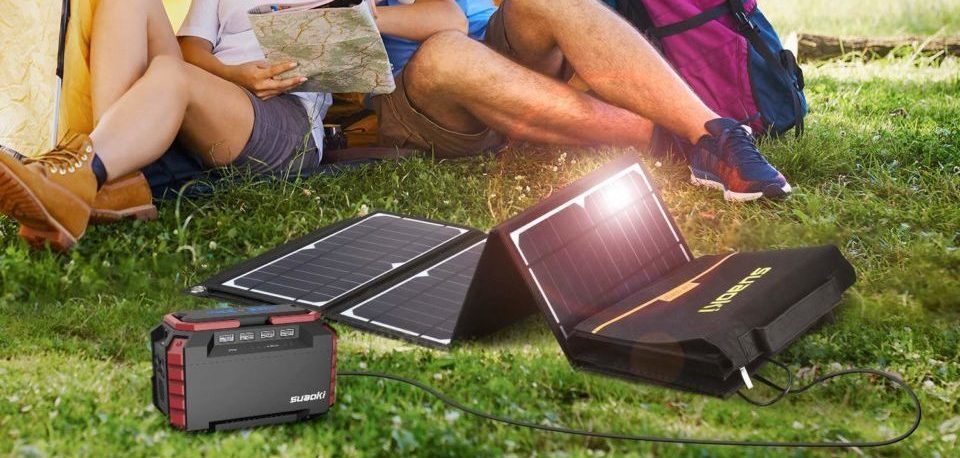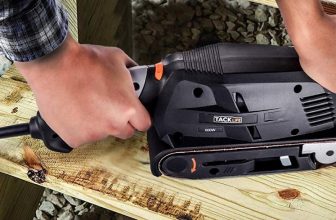Although portable solar panels and solar panel systems get all of the attention when people switch over to a solar power system, the truth of the matter is that the solar batteries in the system are just as important. It doesn’t matter where in the worldst that you live, the sun doesn’t sun 24-hours a day, 7-days a week, so a power system has to be able to have some way to store power. And the best way of storing electricity from sunlight is the solar battery.
That’s why when consumers have a solar system hooked up for their home, they need to purchase the best solar batteries they can find. They need to purchase batteries that will hold up to frequent charging and discharging, and ones that hold a sufficient amount of power for their setup. Unfortunately, not everyone knows what it takes to buy the best battery for their needs, and this is often because most people don’t understand how solar panels work at all.
To help all of our readers understand how solar batteries work, so they can buy better batteries for their needs, we’ve decided to write a little informal guide on the subject. In this informational guide, the consumer will learn everything that they ever wanted to know about solar batteries, so they can purchase the ones that work for their needs the best. Sound good? Well, if it does, then let’s get things started, shall we?
How Do Solar Batteries Work Exactly?
Solar batteries work the way any other type of battery works. As sunlight hits the solar panels, it’s converted into electricity by the solar system. Most of this energy is then used to take care of the power needs of the home—for running things like TVs, microwaves, etc. Any electricity that isn’t being used for this purpose is stored in the solar batteries for later use. Then when power production stops due to the setting of the sun or cloudy conditions, that power can be accessed to keep the home powered.
How To Determine Solar Power Storage Needs
Now that we know how solar batteries work, the next thing that our readers might be wondering is how they can determine their electrical power storage needs. In other words, how can they determine what size and type of battery they need for the best results. In this section, we’re going to briefly cover that subject, so consumers have a better idea of how to buy the best solar battery for their needs.
Power & Battery Capacity
One of the first things that the consumer is going to want to figure out is how much power they need to store, and once they know that, they can determine the number and battery capacity they need. The solar power needs of a home are measured in kilowatt-hours (kWH), and knowing that number will give the consumer a great starting point for finding the right battery.
Once a person knows the kWh of their home, they can determine the battery capacity they need. Although no battery alone can handle the kilowatt-hours of an entire home, these batteries are designed to be stackable, so the homeowner can stack them according to their energy needs.
What the consumer needs to know about solar batteries is that they have two distinct ratings that tell the consumer what they’re good for doing and what they’re not so good at doing. The first rating is a capacity rating, and the second rating is the power rating. Both of these ratings affect how the battery operates.
For example, a battery that has a lower capacity rating and a high-power rating would be able to power an entire home without any other electrical input, but it wouldn’t be able to do that for very long. On the other hand, a battery with a high capacity rating and a low-power rating would only be able to power a small handful of appliances, but they would be able to do it for a long time.
Depth Of Discharge (DoD)
Another thing to think about is the battery’s Depth-Of-Discharge or DoD. The depth-of-discharge tells the consumer the maximum how much of the battery capacity can be used before the battery is damaged as a result. To put it another way, discharging a battery 100% will shorten its life, but the DoD tells the consumer how far the battery can be safely discharged without affecting its life.
For example, if a battery has a DoD of 85% that means that 85% of its capacity can be accessed without worrying about damaging the battery. The higher the depth-of-discharge, the more capacity that can be used, so higher is always better.
Round Trip Efficiency
The round-trip efficiency of the battery is also an important consideration. The round-trip efficiency of the battery is simply the amount of energy it took to store it. Let’s give you an example. Let’s say that a person feeds four kilowatt-hours of electricity into their batteries and they end up getting three kilowatt-hours back—that means the battery has a round-trip efficiency of 75%. We arrived at that figure by dividing the energy out (3 kWh) by the energy put in (4 kWh). That’s the round-trip efficiency.

The Battery’s Manufacturer & Warranty
The next thing that the consumer is going to want to think about is who manufacturers their solar battery and what type of warranty they offer on the battery. As a general rule, the consumer should choose a battery from a manufacturer that they trust and one that gives them a decent warranty—at least 8-years on the product they’ve bought.
The Different Types Of Solar Batteries
The last thing the consumer is going to want to consider is the type of battery they’re going to need. Although we don’t have the space to go into detail on all of the different battery types, we can list some of the major types of solar batteries so our readers can do the research themselves and choose a battery that’s best for them.
Major Types Of Solar Batteries:
- GEL Batteries
- Lithium-Ion Batteries
- Lead Acid Batteries
- Saltwater Batteries
- Absorbed Glass Matt Batteries





